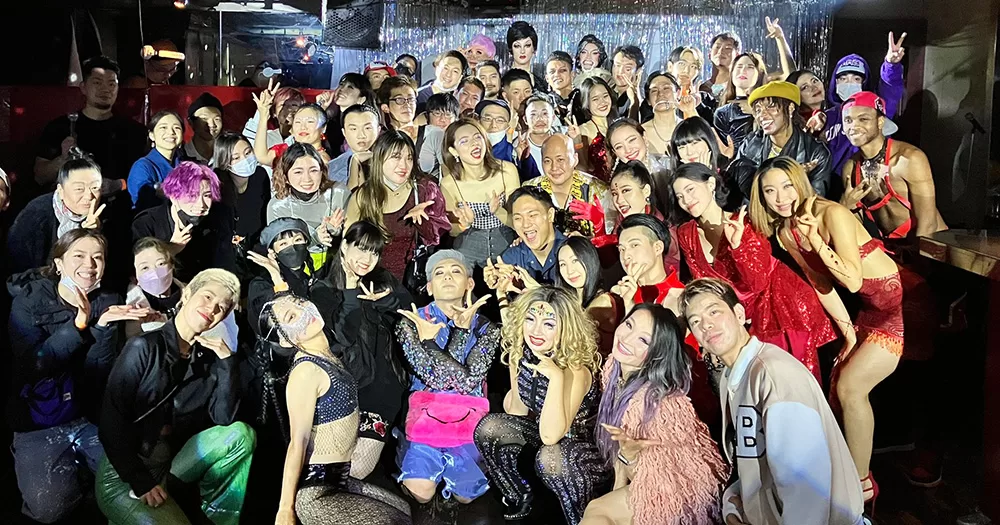The roots of the ballroom scene in Japan can be traced back to the 1990s when Madonna released her groundbreaking and iconic music video ‘Vogue’. This style of dancing resonated with Koppi Mizrahi, the ‘Legendary Overall House Mother’ of The Iconic House of Mizrahi, who has been a revolutionary figure in the Japanese ballroom scene for over a decade.
Koppi, whose real name is Konomi Shishido, is a heterosexual cisgender woman who popularised the ballroom culture in Japan. In an interview with Tatler Asia, she said, “We don’t have many LGBTQ members. LGBTQ individuals hesitate to enter the new culture; they are quite shy.”
View this post on Instagram
Koppi, with a background in various dance styles, immersed herself in vogue by teaching herself the moves through YouTube tutorials. She eventually joined the House of Mizrahi and has become a driving force in nurturing the ballroom culture in Japan.
In a podcast interview with ArtsEquator, Koppi said, “I found the ballroom scene on YouTube and I found so many houses, like House of Ninja, House of Mizrahi and House of Chanel.”
Koppi decided to message the Father of Mizrahi, Andre Mizrahi, asking to be a part of the house. After sending over a few of her videos, she was accepted and has set up a chapter in Japan. “The house is not actually a vogue house, it’s a ballroom house. The ballroom scene is not [just] about voguing. We have many other categories like runway, face, sex siren and realness,” she added.
However, she has faced challenges introducing ballroom etiquette to the LGBTQ+ community, as Japan’s culture traditionally values being quiet and reserved.
Despite the lack of diversity, Koppi remains hopeful that it will grow in popularity among the LGBTQ+ community and she is determined to educate others on the importance of its roots. “The Mother and Father are not just the leaders of the house. It’s like a real mother and father so that they can take care and educate them on how to make money, how to do drag, make up and vogue.”
The emergence of the ballroom scene in Japan parallels the global phenomenon it has become, reaching mainstream attention through documentaries like Paris is Burning and reality competitions like Legendary. While the mainstreaming of ballroom has had its ups and downs, there has been a steadily growing interest in Asia, in other countries like the Philippines, South Korea and Vietnam.
Tracing its roots back to Harlem in the 1970s – the ballroom movement started as a sanctuary for the marginalised, primarily the Black and Latinx community, and it provided a space for expression, acceptance, and belonging.
The ballroom scene was a haven during the HIV/AIDS pandemic, offering not only a platform for artistic expression but also a space for sex education, condom distribution, and testing.
As the ballroom scene evolved, its influence spread across the United States and Europe, leading to the absorption of its terminology and dance techniques into the broader LGBTQ+ lexicon. The mainstream popularity brought both fame and financial gain to some, but it also raised concerns about the appropriation of a culture rooted in the LGBTQ+ community’s history and struggles.
In Japan, the journey of ballroom took a unique trajectory. Unlike its steady growth from the needs of the LGBTQ+ community in Harlem, ballroom culture in Japan developed from the top down – with interest stemming from the waves of popular culture and social media.
From 2011 onwards, Japan’s ballroom scene grew, particularly in Tokyo and Osaka. Koppi’s efforts, combined with the influence of other voguers, marked a significant shift from the quiet early balls to the lively, vibrant gatherings.
The breakthrough came in 2022 when Hiha Babylon, a protégé of Koppi, organised the Kiki Lounge, instantly transforming the ballroom scene with packed venues, spontaneous walk-ons, and a surge in interest.
View this post on Instagram
Speaking to ArtsEquator, Koppi said, “Asian ballroom is definitely getting bigger and bigger. But it depends on the countries and cultures. In Japan, people are still hesitating to come to the ball because Japanese people are so shy. They don’t want to try every new thing. But I’m trying to push people to walk the ball, or just come to the ball to watch how we’re doing it. You can’t really know deeply about voguing without watching the culture”.
To read about the emerging ballroom culture in Ireland, click here.
© 2023 GCN (Gay Community News). All rights reserved.
Support GCN
GCN is a free, vital resource for Ireland’s LGBTQ+ community since 1988.
GCN is a trading name of National LGBT Federation CLG, a registered charity - Charity Number: 20034580.
GCN relies on the generous support of the community and allies to sustain the crucial work that we do. Producing GCN is costly, and, in an industry which has been hugely impacted by rising costs, we need your support to help sustain and grow this vital resource.
Supporting GCN for as little as €1.99 per month will help us continue our work as Ireland’s free, independent LGBTQ+ media.

comments. Please sign in to comment.